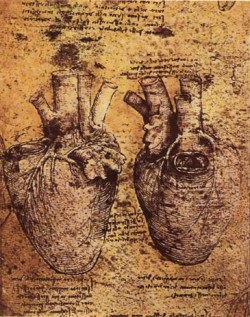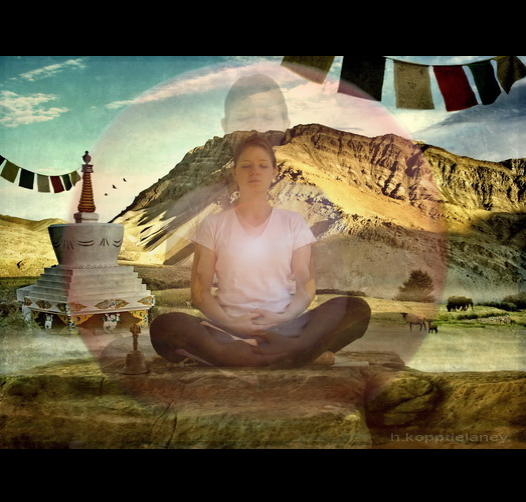“Sat Naam” is Sanskrit for “I Am.”
There is a great deal of power in those two simple words according to numerous ancient traditions. For example, in the Judeo/Christian traditions, there is a biblical passage asking God to identify Himself where He answers, “I am that I am.”
Combining our conscious attention to the meaning along with focused attention to our breath is to harness the infinite potential of Godliness. It is at once very simple and yet so complex to enter into this subtle dimension of infinite reality.
While there are many possible applications for this mantra, I find the following to be incredibly effective.
The meditation can be done seated, standing or even lying down, just so long as the elements of lifting/expanding and opening can be felt on the inhaled breath and the elements of releasing/softening and grounding can be experienced on the exhaled breath. These seemingly paradoxical elements, i.e. the two essential sensory experiences we hold in our awareness, are in reality two sides of the same coin.
In our physical world of “relativity,” we can only experience something for what it is, as a result of having the converse experience; for example, we know the temperature is hot once we experience cold and how hot we feel is relative to our experience on the cold-hot spectrum.
If we live in a region of temperate climate, we may rate the heat of summer on its hottest day as a “10” because it is relative to our past experience. If we then move to another region near the equator, we may re-evaluate our past experience of heat as a “seven,” since we have now expanded our experience on the cold-hot spectrum.
Our subjective experience influences our perception in a very real way by influencing our view of the future.
Our outlook changes, in that what we once experienced as “insufferable” heat is now viewed as “a little on the warm side.” Changing perspective affects our view going forward. This is how we imperceptibly and unknowingly slide into behavior of our past defining our future.
By directing our full attention to the word “Sat,” such that “I” is the focus of our innermost attention as we inhale and enable our sensory perception to experience a lifting/lightness, we elevate our Self-perception in the most integrated manner. Through opening our heart-center as we inflate our lungs and physically create a lift to our sternum, we gain access to the expansiveness around our heart.
Our physical heart region also envelops our energetic field, as demonstrated by expressions like having a “heart-lifting” experience.
It is no surprise that we innately bring a hand to our heart region whenever we witness something of breath-taking beauty since the seat of love and compassion reside in the heart. The deeply felt and well-executed inhaled breath opens up our heart to the seat of love within.

As we complete our inhaled breath and allow our attention to linger a moment longer on blissful loving energy, we then gently shift our awareness toward “Naam” where our existence through “Am” and the exhale/release portion of the breath are felt. Here, we experience release of effort with simultaneous awareness directed to our sensory experience of grounding through our physical body in contact with the earth.
Grounding constitutes safety and security.
Taken to the extreme, we may recall Sandra Bullock’s heart-rending performance in “Gravity” as she convincingly portrays her experience of disconnection through overwhelming feelings of fear and disconsolate emotion. She is experiencing the ultimate “groundlessness” through floating in outer space.
Her physical experience is heightened through further loss of attachment to her sole companion in space (George Clooney—no doubt any woman giving up attachment to this man would suffer despair!), as this final severed connection eliminates all sense of grounding on the energetic level. The film illustrates how the energetic disconnect is ultimately more powerful than the physical loss of grounding suffered by release from gravity.
One can reasonably assume that with proper training we can prepare our physical body for this sensory deprivation more readily than we can become conditioned to accept the emotional reality of our separation from humanity. With “Naam” that is “Am,” we anchor our existence through Earth and connect with all humanity.
We cannot separate “Sat” from “Naam” any more than we can prize our inhaled breath over our exhaled breath. While either breath-phase is paramount in its own time, neither phase has meaning independent of the other. There is no future for another inhaled breath until we have released through the experience of exhaled breath.
There is no future for expansion of the heart and feeling the energy of love without releasing it and grounding our energy through attachment to ourselves and to this Earth. This action provides the anchor for our physical self as well as our humanity.
The experience of relativity, as always is about two sides of the same coin, i.e. the Yin and the Yang. The spectrum of our experience is widened through having lived each as fully as possible.
As we gain experience with one element, so we gain appreciation for the other, i.e. more felt experience of grounding provides opportunity for greater feelings of love—in as much as a wide-open heart provides the necessary base to feeling fully secure and grounded.
By holding the full spectrum in our awareness, we more vividly internalize and reflect our lived experiences. As we integrate our lived reality, we understand that no experience is wasted and none is to be denied. We simply breathe it all in and honour each experience with our fullest attention. We hold in our awareness that no aspect of our reality can exist without the other because they are all dimensions of our wholeness.
Breathing the mantra of “Sat Naam,” we take in the totality of our life experience, leading us to a deeper and richer awareness of living through a unified lens of perception.
Love elephant and want to go steady?
Sign up for our (curated) daily and weekly newsletters!
Author: Rhonda Travis
Apprentice Editor: Kim Haas / Editor: Catherine Monkman
Photos: Hartwig HKD/Flickr, Wikipedia Commons







Read 4 comments and reply